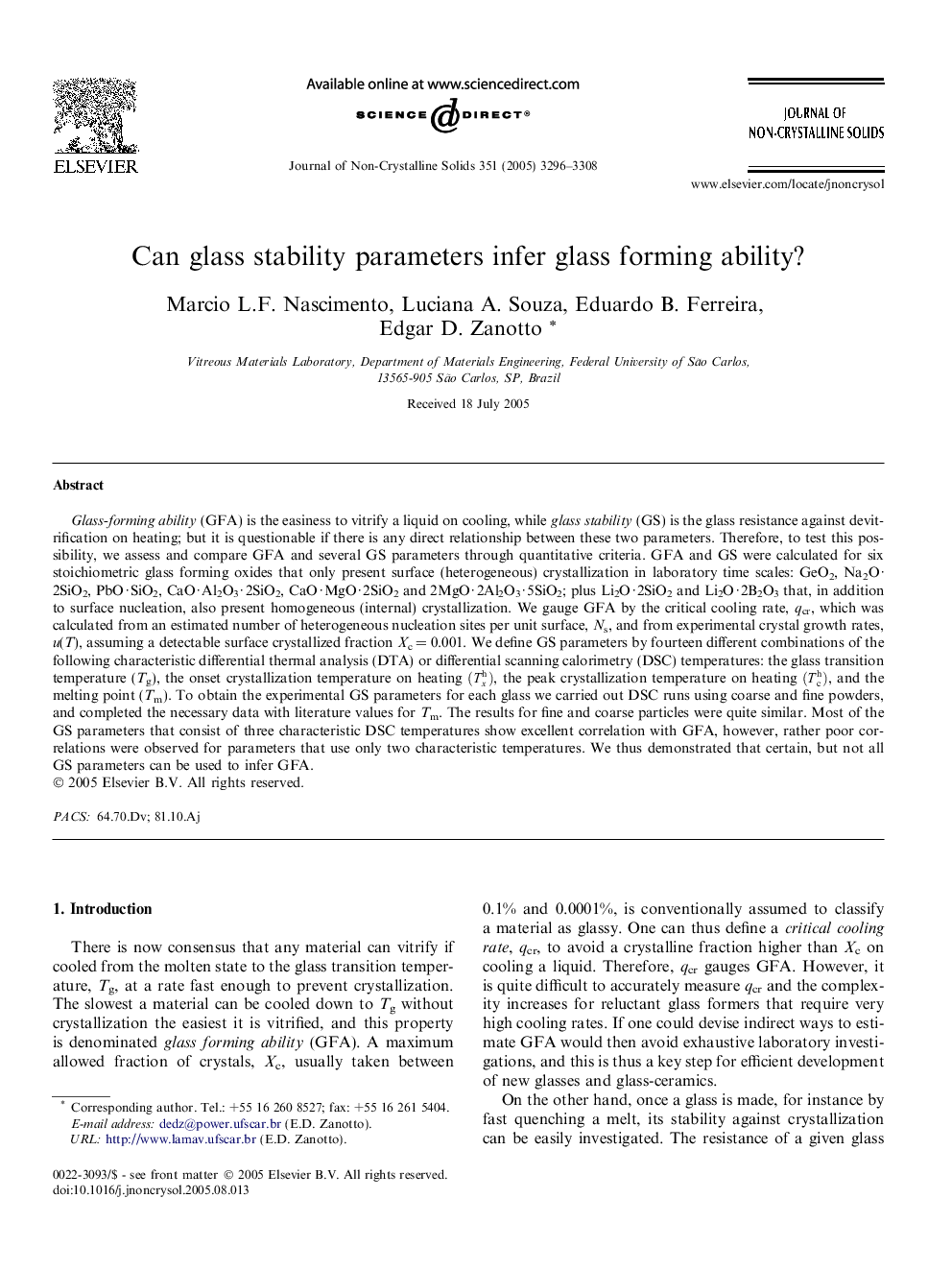| Article ID | Journal | Published Year | Pages | File Type |
|---|---|---|---|---|
| 1486663 | Journal of Non-Crystalline Solids | 2005 | 13 Pages |
Glass-forming ability (GFA) is the easiness to vitrify a liquid on cooling, while glass stability (GS) is the glass resistance against devitrification on heating; but it is questionable if there is any direct relationship between these two parameters. Therefore, to test this possibility, we assess and compare GFA and several GS parameters through quantitative criteria. GFA and GS were calculated for six stoichiometric glass forming oxides that only present surface (heterogeneous) crystallization in laboratory time scales: GeO2, Na2O · 2SiO2, PbO · SiO2, CaO · Al2O3 · 2SiO2, CaO · MgO · 2SiO2 and 2MgO · 2Al2O3 · 5SiO2; plus Li2O · 2SiO2 and Li2O · 2B2O3 that, in addition to surface nucleation, also present homogeneous (internal) crystallization. We gauge GFA by the critical cooling rate, qcr, which was calculated from an estimated number of heterogeneous nucleation sites per unit surface, Ns, and from experimental crystal growth rates, u(T), assuming a detectable surface crystallized fraction Xc = 0.001. We define GS parameters by fourteen different combinations of the following characteristic differential thermal analysis (DTA) or differential scanning calorimetry (DSC) temperatures: the glass transition temperature (Tg), the onset crystallization temperature on heating (Txh), the peak crystallization temperature on heating (Tch), and the melting point (Tm). To obtain the experimental GS parameters for each glass we carried out DSC runs using coarse and fine powders, and completed the necessary data with literature values for Tm. The results for fine and coarse particles were quite similar. Most of the GS parameters that consist of three characteristic DSC temperatures show excellent correlation with GFA, however, rather poor correlations were observed for parameters that use only two characteristic temperatures. We thus demonstrated that certain, but not all GS parameters can be used to infer GFA.
